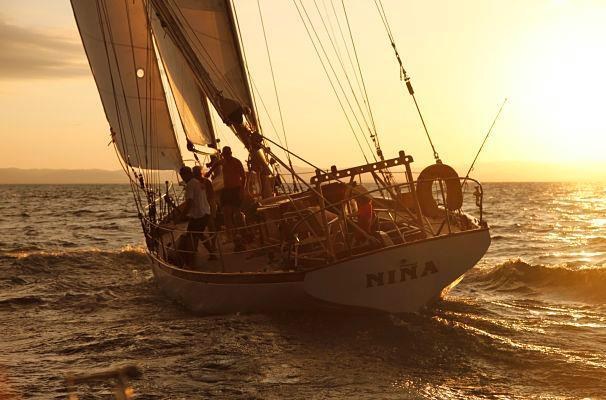
Classic Yacht Long Overdue
Friends and authorities are beginning to fear the worst for the seven sailors aboard the classic 70-ft American staysail schooner Nina, as the vessel hasn’t been heard from since June 3. Those aboard included owner David Dyche III, 58, and his wife Rosemary, 60, both of Panama City, Florida; their 17-year-old son David; Evi Nemeth, 73, of Colorado; an unidentified 28-year old American male; an unidentified 18-year old American female; and a 35-year old British male.
Dyche, a commercial ship captain, has owned the schooner for more than 25 years, and has successfully cruised her and raced her from the East Coast to Turkey to many places in the Caribbean. He was fully aware of the rough weather that sailors often encounter on the way between New Zealand and Australia. In Dyche’s last Facebook posting on May 29, he wrote, "The Tasman Sea is shooting gales out like a machine gun, living up to its reputation. We are shooting at leaving out after the first one this week. No doubt we will be dancing with one or two of them.”

© Latitude 38 Media, LLC
The famed schooner left New Zealand’s Bay of Islands on May 29 bound for Newcastle, Australia. On June 3, when Nina was 360 miles northwest of Cape Reinga, the northernmost tip of New Zealand, she contacted respected Kiwi meteorologist Bob McDavitt, reported rough conditions, and asked for advice on how to get out of it. McDavitt, who says that nobody sounded distressed on the boat, advised them to head south and prepare to be hit by winds to 60 knots and 20-ft seas. These are heavy weather conditions, but certainly the schooner had ridden out as bad or worse.
Despite attempts to contact Nina the following day, McDavitt got no response. It wasn’t until June 14 that New Zealand Rescue Services learned the boat was overdue. Since then they have conducted what has been described as their most intensive search ever. But nothing has been found.
Nina, a narrow schooner with long overhangs, was designed by the famed Starling Burgess and built by Ruben Bigelow on Monument Beach in Cape Cod in 1928. She was built expressly to win the 3,900-mile race from New York to Santander, Spain. And she did. When she arrived in Santander, a launch pulled alongside and a gentleman waved his cap and shouted, "Well sailed, Nina, I congratulate you. I am the King of Spain."
Nina continued on to England where she became the first American vessel to win the prestigious 600-mile Fastnet Race. She then won the London to Chesapeake Bay Race, after which her owner got involved in the America’s Cup. She was purchased and much loved by a New York banker, and was an extremely successful on the race course before and after World War II. After several more owners and being donated to the King’s Point, she was purchased by Dyche in 1989. After successful racing in the Northeast and the Caribbean, he cruised her as far east as Turkey and as far south as Grenada.
In 2008, the Dyche family started making a circumnavigation with the schooner, and a documentary, intending to finish it prior to their son’s entering college.
While nobody knows what happened to Nina, several maritime rescue experts have speculated that the 84-year-old wood boat suffered a catastrophic failure, one that for some reason left the crew unable to set off the vessel’s EPIRB.
When we first started publishing Latitude more than 35 years ago, it wasn’t uncommon for several cruising boats to go missing in the South Pacific each year. Thanks to sophisticated EPIRBs and greatly increased SSB nets around the world, such unexplained disappearances have become rare.
